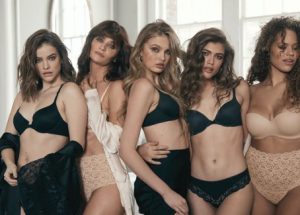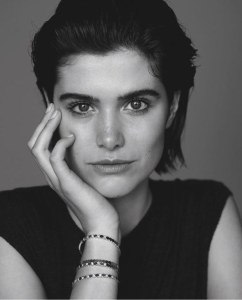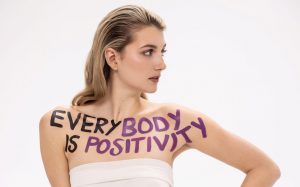Can’t see the wood for the trees anymore? Green, organic, sustainable, vegan, eco, natural…These sustainable terms are thrown around a lot these days. Not so long ago, there was an H&M campaign in town featuring eco-heroes and climate warriors. Wow, amazing! If even the biggest fast fashion chains will be sustainable, the world is going to be fine. But…? Not really, unfortunately. Even though brands are constantly using sustainable terms to keep the marketing machine running, they are often misleading and there is greenwashing going on. (Also check this article about greenwashing by H&M). To start at the beginning: what terms do we actually come across and what do they mean?
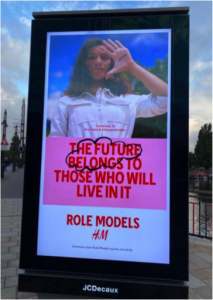
Sustainable: The original definition of sustainable development comes from the Brundtland report of 1987: “a development that meets the needs of the development that meets the needs of the present without compromising the needs of future generations, both here and in other parts of the world.” Nowadays, this term is unfortunately misused because the definition can also be interpreted differently. Sustainable can also mean “the ability to maintain a certain level”. Simply put, if I grow cotton in a field and want it to keep growing, one “sustainable” way to do so might be to use pesticides and fertiliser. That way, the cotton plants continue to grow at the level I want them to, and my yield is therefore sustainable. This shows that sustainable does not have to mean “good for the planet”.
Green: green is a colour. Brands use it to make consumers think they are contributing positively to the climate. Unfortunately, the word can be used freely and is not checked. In short, a meaningless term without third-party certification.
Natural: This often refers to the fabrics used: natural cotton. The term tells how the fabric was created, but leaves out whether pesticides, fertilisers or other chemicals were used. Look instead for the “Global Organic Textile Standard” label. They set high standards for production based on both environmental and social criteria.
Okay, so a lot of things are not really sustainable. So how can I buy clothes in a green way?
Buy less
The most sustainable thing you can do is not buy anything. Before you buy a new piece of clothing, look in your friends’ or family’s closets. Maybe there is something in there you can borrow. And if not, there are more and more places where you can rent clothes. My favourite at the moment is the Circle Closet. I recently rented a beautiful Jacquemus dress there for a party, but they also have clothes for the season and work. Also, good things (clothes) come to those that do good. So also lend clothes from your closet to friends or give clothes you don’t wear anymore to the local thrift shop.
Buy vintage
Amsterdam is a Vintage hotspot in Europe. The more vintage people buy, the less new clothes need to be made and the less textiles end up on the scrap heap unusable. No idea where to find nice vintage shops? My favourites in Amsterdam are: Penny Lane, Mood Indigo, Candy Store, Bis!, and the IJhallen. Of course, there are also many online platforms where you can buy or sell second-hand clothes, such as Vinted, Depop and Vestiaire.
Invest in quality
Invest in a few good, timeless, durable basics. Choose clothes you know you will wear often. Pay attention to the quality of the materials: durable clothes last a long time. But how sustainable your garment is depends on several factors in the supply chain: water use, energy costs, waste production, use of chemicals, working conditions, shipping, animal welfare, and choice of materials, to name just a few. Many brands now have their sustainability report on their website where you can read more about this supply chain, but this is often a lot of blah blah blah. It is also difficult to criticise because the focus is on what is going well, but what is going badly (often a lot!) is left out. To find out which brands are really doing well and which brands are using mostly empty terms for good marketing, I often use the app “Good on You“. They give sustainability ratings based on 3 pillars: labour, environment and animal. Not every brand is on there yet, but they have plenty of sustainable options.
Third-party certification
Besides the GOTS certification, there are a few more labels to look out for. This articlegives a brief breakdown of 10 certifications that you can check when making your next purchase. (Or if you don’t feel like reading: these are the pictures).
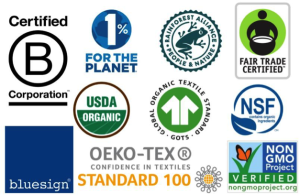
Oh, and a word about “ordering several sizes and returning the wrong ones”. With many brands, this means that the returned clothes are burned. This is often cheaper than washing, folding and repackaging the garments. So think about what size you are before you order. Or even better, buy your clothes in a shop: support your local, always the right size and no unnecessary shipping pollution.
I hope I was able to help you find your way through the green clothes forest. Have fun picking out your next outfit! #Rolemodel
Love, Kiki.
PS: I recently came across this brand: Covalent fashion. This is a carbon negative brand, which means they capture more CO2 than they emit. They make their glasses and accessories from AirCarbon: a material made by greenhouse gas eating bacteria. Sounds good, right?
Kiki Boreel is an international model and studies Future Planet Studies at the UvA. She has also been named Climate Ambassador of the Future (’21) by the Ministry of Economic Affairs and Climate. Follow her on Instagram (@kikiboreel). There she shares sustainable initiatives and clothing brands plus tips and tricks on how to go green yourself.



